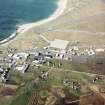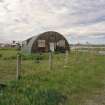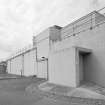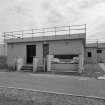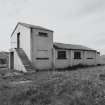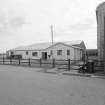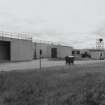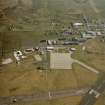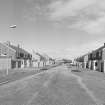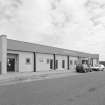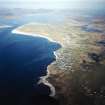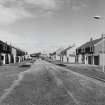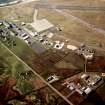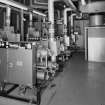Benbecula Airport, Airfield
Airfield (20th Century)
Site Name Benbecula Airport, Airfield
Classification Airfield (20th Century)
Alternative Name(s) Balivanich; Raf Benbecula; Benbecula Aerodrome; Port Adhair; Bheinn Na Faoghla
Canmore ID 90522
Site Number NF75NE 4
NGR NF 7870 5611
NGR Description Centred NF 7870 5611
Datum OSGB36 - NGR
Permalink http://canmore.org.uk/site/90522
First 100 images shown. See the Collections panel (below) for a link to all digital images.
- Council Western Isles
- Parish South Uist
- Former Region Western Isles Islands Area
- Former District Western Isles
- Former County Inverness-shire
NF75NE 4.00 centred 7870 5611
For South Uist guided missile range (A.S.A.T.) site see NF74SE 31.00
NF75NE 4.01 centred NF 77102 55329 Barracks; Military camp
NF75NE 4.02 centred NF 78033 55338 Barracks; Military Camp
NF75NE 4.03 centred NF 76159 42759 Radar site; Buildings
NF75NE 4.04 centred NF 79014 55691 Radar site; Aircraft Hangars
NF75NE 4.05 centred NF 78226 55502 Control tower; Aircraft Hangars
NF75NE 4.06 NF 78260 56184, NF 78351 56331 and NF 78401 56497 Aircraft Hangars
NF75NE 4.07 NF 78910 57036, NF 78933 57248 and NF 78971 56882 Bomb Store
NF75NE 4.08 NF 78969 56553 and NF 79170 56639 Aircraft Hangars
NF75NE 4.09 centred NF 7669 5524 Military Camp
NF75NE 4.10 centred NF 7660 5503 and NF 7630 5508 Military camps
NF75NE 4.11 c.NF 7843 5505 Bunker (Battle HQ).
A wartime airfield developed from a pre-war civilian airstrip, known as Balivanich. It consists of three runways of unusual construction using bitumen laid directly on sand.
D J Smith 1983
This airfield is situated in an area to the NE of Baile a'Mhaniach.
The airfield is still active with many modern buildings interspersed among the WW II structures. The still extant WW II buildings include the Battle HQ, surface shelters and other ancilliary structures.
The radar control and reporting centre which linked with the Buchan Radar site during the Cold War period also survives at this airfield.
J Guy 2002; NMRS MS 810/12, 97-100
The complete immediate postwar airfield including the runways, aircraft hangars, bomb store and accommodation camps is visible on vertical air photographs taken in 1946 (CPE/Scot/UK191, 4038-4043, flown 10 October 1946).
The runways were constructed using a type of construction where bitumen was laid directly on to compacted sand (Smith 1983). The aircraft hangars were half size T2 type, supposedly to minmise the area exposed to the high winds expected on this airfield. All aircraft hangars have now been removed with two being sold in 1949 to Royal Dutch Airlines for re-erection at Schipol Airfield (Smith 1983).
The bomb store (NF75NE 4.07) is situated at An Tom to the N of the runways.
The airfield is now in use as Benbucla Airport and some reconstruction has ocurred in the area around the control tower. The airport and more recent military activity is visible on 1988 air photographs (All Scotland Survey, 04 87 155-157, flown 22 May 1987).
The Luftwaffe target photograph (1941) shows the airfield under construction with the runways half completed and many of the ancilliary buildings incomplete. There is no evidence of the bomb store (NF75NE 4.07) on this image.
Information from RCAHMS (DE), August 2005
External Reference (18 May 2012)
Mr Macdonald, resident of Benbecula, suggests that the airstrip was not built directly on sand as recorded in some sources. Local residents recall machinery being used to move large amounts of sand prior to laying of a mixture of sand, lime and tar under matting. Once cooled, a tracklayer passed over, followed by a steam roller.
One of the machines used was manufactured by the Barber-Greene company and the steam roller is remembered as having pictures of rearing horses on the rollers. It is also remembered that there were a number of delays as machinery parts had to come from the United States. Later on in construction, permission was granted to manufacture spare parts in England.
The sub-contracters for this work was Limmer and Trinidad.
Information from Mr A Macdonald, Benbecula, via email.
SC 18 May 2012

















































































































